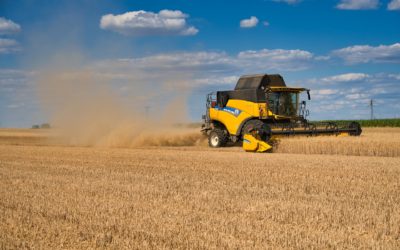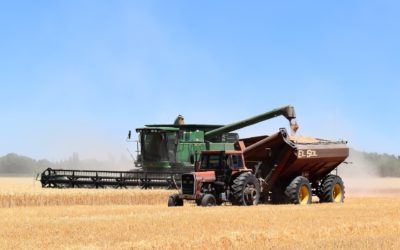Application of a pre-harvest management herbicide to a standing crop – closely follow product label guidelines.
“While pre-harvest management herbicides do not speed-up crop maturity, they help maximize crop yield and quality potential,” explains Neil Whatley, crop specialist at the Alberta Ag-Info Centre. “Application of these products can also assist with controlling perennial weeds and weed escapes from the growing season.”
These products are categorized as either a desiccant or a pre-harvest weed control herbicide.
Desiccants are recognized as harvest aid products. Desiccants are commonly contact herbicides, and their mode of action is generally fast acting.
He says that application of these products hasten dry-down of a crop that is already mature as well as drying the vegetative growth of weeds, ensuring earlier and easier direct combining of a standing crop.
“Glyphosate, on the other hand, has a slower, systemic mode of action that allows it to translocate through a plant. Therefore, glyphosate is the preferred pre-harvest herbicide applied to control perennial weeds like quackgrass and Canada thistle.”
Desiccants and glyphosate are registered to be applied when the crop’s seed is at physiological maturity. Product labels explain the correct crop stage for application as well as specifying the appropriate water volume used with a specific herbicide.
“Application earlier than at proper seed maturity can negatively impact yield,” says Whatley. “Exceeding the product label rate or applying these products earlier than at the recommended crop stage can exceed a product’s maximum residue limit (MRL).”
“An MRL, established through research during the herbicide’s registration process, is the legal amount of herbicide residue allowed in harvested grain. Heath Canada assures that MRLs are based on residue amounts that are significantly below a level that would negatively impact human health.”
Crop Protection 2019 contains product label guidelines, and the website Keep it Clean features a useful drop down menu for various crops and pre-harvest management herbicides.
Whatley adds that Canada is a major grain exporter, and importing countries can set their own grain import MRL level, which may not be the same as Canada’s level.
“Other end-users, especially those purchasing barley for the malt market, or oat millers, have their own MRL regulations or do not allow pre-harvest herbicides to be used at all. When uncertain, growers are encouraged to consult their grain buyer prior to pre-harvest herbicide application.”
Source: Alberta Ag




